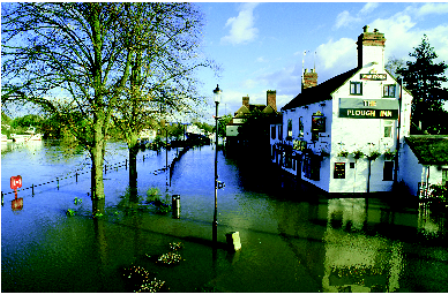1.5 Innovation = creativity?
Before we explore innovation in relation to environmental management, we still have to consider the potential overlap between innovation and creativity. This overlap needs some clarification if we are to understand innovation.
On searching the internet for images associated with ‘innovation’, it was quite a surprise to see innovation often depicted as a light bulb (at least at the time of writing). It may be something to do with the idea of a light bulb as a major innovation in lighting technology (compared with candles and oil and gas lamps). But light bulbs are often used to denote creativity or a spark of genius – ‘the light bulb moment’. This suggests that innovation and creativity are closely linked.
But, are innovation and creativity the same thing?
Returning to McDermott and Sexton (2004), they recognise that the two terms are used interchangeably. They note this can cause problems because of the sometimes traditionally negative interpretation of creativity in business situations. They explain:
Creativity, to some, seems applicable only in the domain of artists, poets and other ‘non-business’ types. It implies risk-taking, rule-breaking, and unstructured chaotic activities that make some leaders extremely nervous. We don’t happen to agree with those fears, but we suggest you avoid the potential problem by distinguishing between the two terms this way:
Innovation is the value-added application of a creative idea.
Innovation as the application of creativity and also invention is reinforced by many writers (for example, West and Altink, 1996; Yusuf, 2009; Sawyer, 2012), not least the seminal work on the distinctions between creativity and innovation by Theodore Levitt in his 1963 paper Creativity is not enough.
In thinking of innovation as the application of creativity, it is also important to be aware that this can include creative thinking. Innovation can occur as a change in perspective – seeing something anew – and adopting a new perspective on the thing or situation in question. For example, an engineer might have a particular perspective on a river as something to be controlled and ‘enclosed’ by concrete flood defences. The same engineer, if they changed their perspective about the river, its functions and dynamics, might see it as something to be allowed ‘room to flood’ in nearby fields. Following major flood risk during the 1990s, such a shift in perspective has underpinned Dutch government initiatives for flood management of the Rhine since 2007 under the Room for the River [Tip: hold Ctrl and click a link to open it in a new tab. (Hide tip)] programme. Could such innovation in thinking address similar problems for the UK?
Rather than being creative in terms of specific content, the innovation in flood management arose out of a change in perspective about what a river ‘does’. The river itself has not changed, but the perspective of those trying to manage it has changed. As such, there is an innovation in perspective (and subsequently in ideas and practices) rather than the thing itself (in this case a river). As you go through this course you will see how perspective is important to your thinking about innovation, and how systems ideas and thinking can help inform your perspective of innovations and environmental management.
There is still one key aspect of innovation that we have yet to discuss, but is important for environmental management: is innovation always characterised by a marked change in direction or can it also be incremental? In other words, can we categorise innovation in some way?


